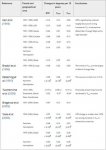- Joined
- Dec 31, 2016
- Messages
- 11,375
- Reaction score
- 2,650
- Gender
- Male
- Political Leaning
- Independent
We all, not you, get that.
It is not a new or difficult idea.
It has not changed so that would not explain how the nights have warmed up more tha the day.
Once more. The earth is not seeing a deep freeze as early in the year. Thus the earth takes in the heat from the sunshine throughout the day. At night, the earth releases this thermal mass heat. Now consider the new variable...
There is no new variable for the daytime heat. The sun heats the air surrounding the earth, and temperature is measured. It is a little warmer because of warmer overall heat.
We have a variable at night and the very early morning. The thermal mass is now at a greater temeprature, because there has been no deep freeze. As the evening gets cooler, the thermal mass starts releasing heat (euqilibrium heat flow principal). Thus, we have not only the warmer overall heat, but the additional heat emanating from the warmer thermal mass.


